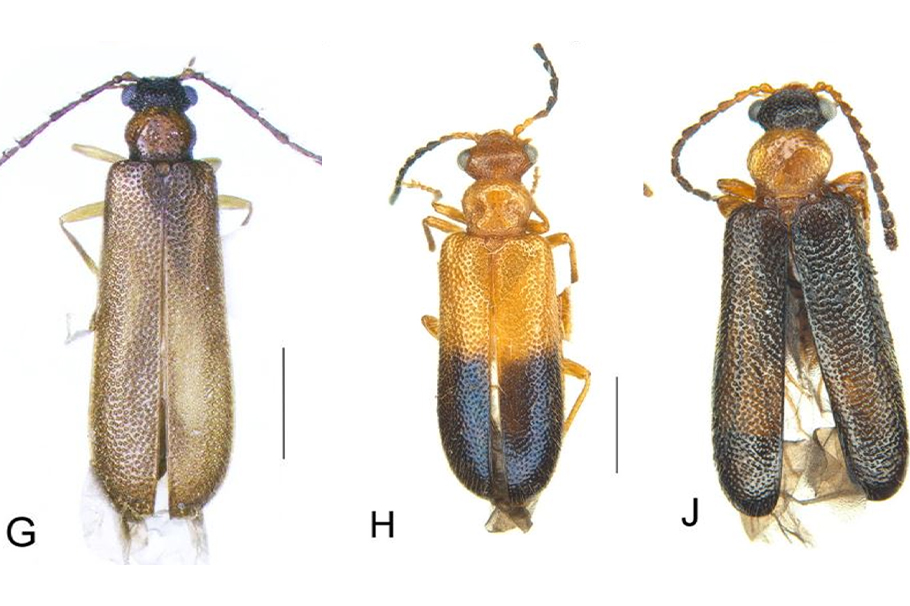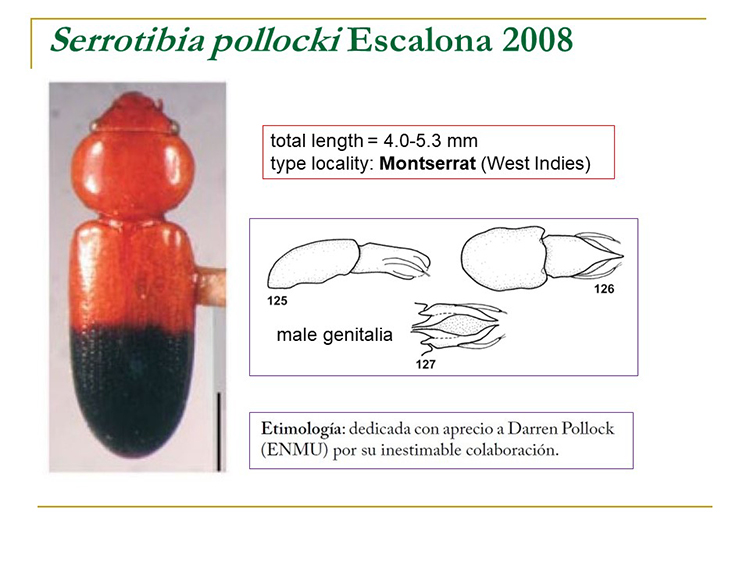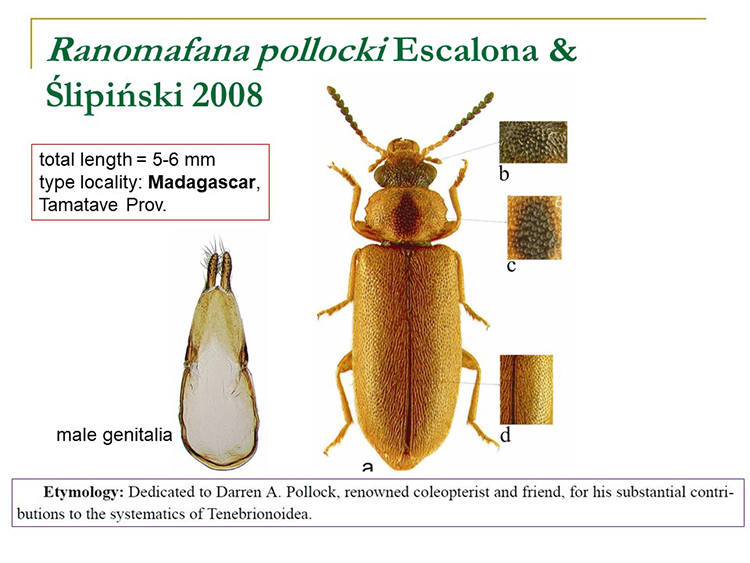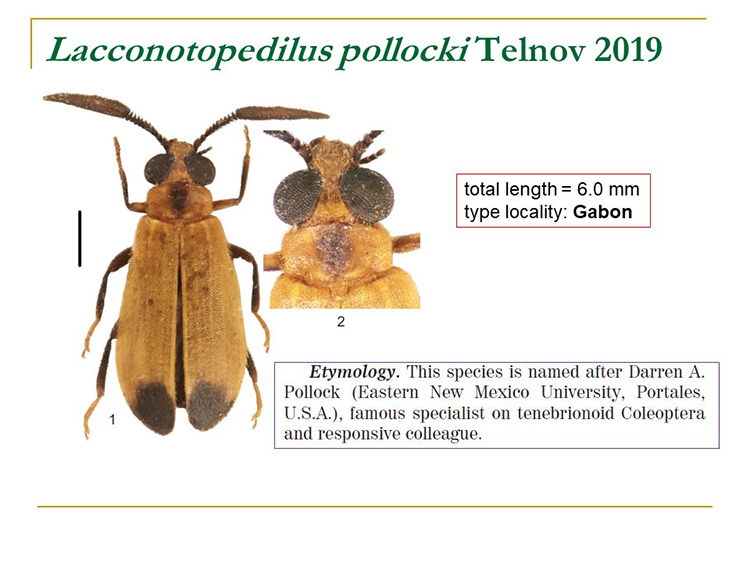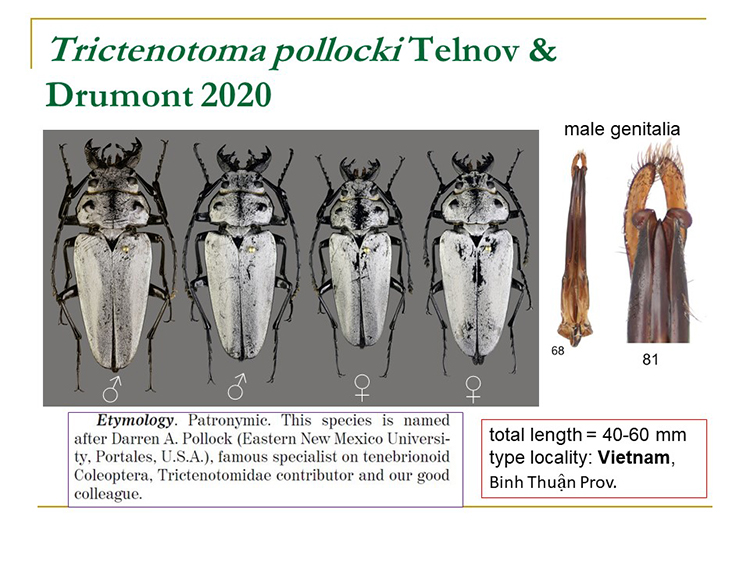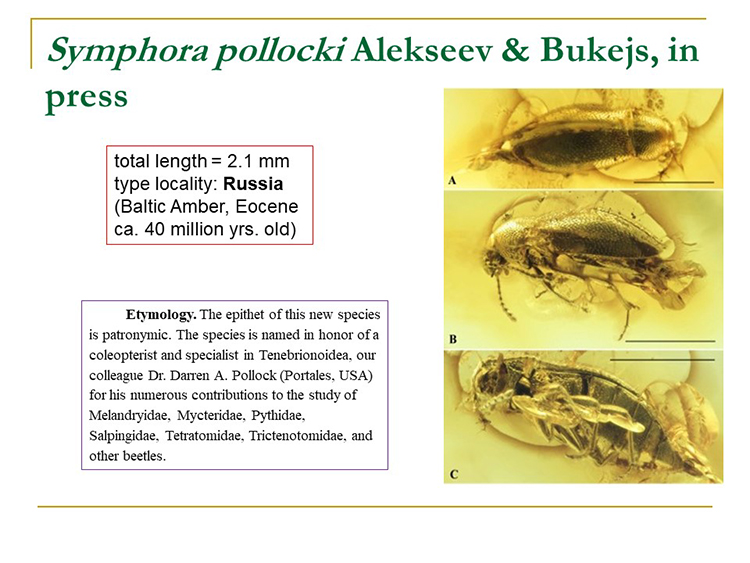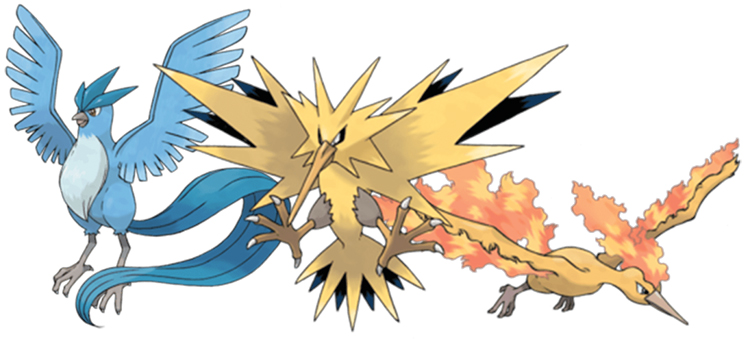
Articuno, Zapdos and Moltres, the Legendary bird trio from the Pokémon franchise.
Gotta name 'em all! Dr. Darren Pollock, professor of entomology at Eastern New Mexico University, and his colleague Yun Hsiao, a Ph.D. student at Australian National University, named three new species in an Australian genus of beetles after the Pokémon franchise's Legendary birds, a trio of rare Pokémon consisting of Articuno, Moltres and Zapdos. The beetles are named Binburrum articuno, Binburrum moltres and Binburrum zapdos.
The duo's research paper, titled "Contribution to the knowledge of the endemic Australian genus Binburrum Pollock, 1995 (Coleoptera: Pyrochroidae: Pilipalpinae), with description of three new species," was published in The Canadian Entomologist in December 2020.
Dr. Pollock is no stranger to interesting beetle names; the professor has had several beetle species named in his honor, which are pictured throughout this article.
He discusses his extensive beetle-based research background and what inspired the decision to name the new beetle trio after highly sought-after Pokémon characters.
Serrotibia pollocki Escalona 2008, named after Dr. Pollock.
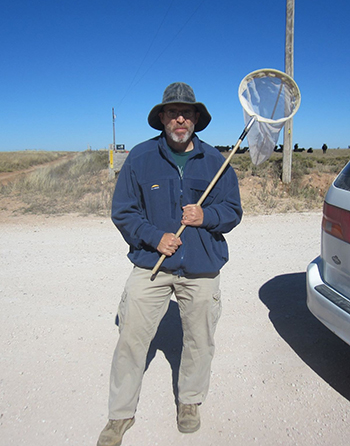
Tell us about your academic background and previous professional positions.
I did my B.S. (1985) and M.S. (1988) degrees at the University of Manitoba (Winnipeg) and Ph.D. (1994) at the University of Alberta (Edmonton). After leaving Canada, I did postdoctoral stints working on beetle systematics at Montana State University (Bozeman) and Carnegie Museum of Natural History (Pittsburgh). Then I went back to the University of Manitoba in 1997 to head up a project studying the effect of fire on tallgrass prairie. Thankfully, before this project was completed, I was offered another postdoctoral appointment at the Texas Agricultural Experiment Station in Bushland, Texas.
This project dealt with beetles, but instead of taxonomy, I was investigating the potential of using tiny ladybugs for biocontrol against spider mites in corn. One day, I think it might have been in May or June 2001, I got a phone call from Dr. Marv Lutnesky, the chair of the ENMU Department of Biology, asking me to come in for an interview. And the rest, as they say, is history!
How did you choose your fields of study?
I'm not sure if there was a single incident or episode that steered me towards insects, though I do recall fondly traveling to my grandmother's home in British Columbia and being introduced to a whole different set of critters that I had never seen back home in Winnipeg ... especially earwigs! I remember collecting dozens of them and keeping them in jars. So, I suppose I've always had a soft spot for "creepy crawlies."
As for their taxonomy and classification, once I began to observe and collect them, I wanted (needed) to know their scientific names and so began researching that aspect of entomology. I eventually became a "world expert" on several families of beetles because I was the only one (in the world) working on them!
Ranomafana pollocki Escalona & Ślipiński 2008, named after Dr. Pollock.
Tell us about your role at ENMU.
My teaching responsibilities at ENMU encompass mainly the "invertebrate" side of things: Entomology, Invertebrate Zoology, and Parasitology (this is probably my favorite!). I also teach both of our General Biology courses, a course on Evolution and Systematics and a couple of graduate-only courses.
I really enjoy getting students excited about invertebrates! After having been here 20 years, I know that I've had a few converts. I have had a few grad students under my supervision; these students have conducted original research on beetle taxonomy and systematics.
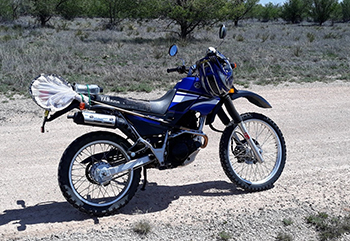
Speaking of research, ENMU has an excellent natural history museum, in which are thousands of pinned, jarred, spread, stuffed and otherwise mounted specimens, representing taxa all the way from plants to mammals (and lots of insects). I remember spending a solid week in the collections when I first got here in 2001 – ENMU is very lucky to have this amazing resource that not only assists in teaching but also supplies researchers worldwide with valuable specimens or the data associated with them. I am very proud to be a curator of this collection.
Tell us about your research. What inspired you to pursue this research path?
As stated above, my research deals with putting names on new species of insects, and then using their characteristics to place them within a classification. I "adopted" a few families of beetles early in my career and made them my own. This may sound extraordinary, but keep in mind that there are SO many species of insects for which almost nothing is known ... so one can make a very meaningful impact on entomology by concentrating on one or a few of these neglected insect groups.
I fully expected that I would continue to work on beetles, but a chance encounter with a pair of mating mydas flies in June 2014 had a profound effect on my entomological pursuits! Since then, I've become very interested and almost obsessed, I suppose, with a group of predatory insects called "robber flies" or "assassin flies." I soon discovered that these flies are very common and diverse around Portales. I also discovered that almost nothing was known about their distributions, behaviors and food preferences. As well, there was no list of New Mexico species, so I set about to observe, collect and document the robber flies of eastern New Mexico.
Since that epiphany, I've collected, prepared and identified almost 20,000 specimens, including 10,000 with associated prey. This makes the ENMU collection of robber flies one of the best in the world!
I still do work on beetles, but I find that they often take a back seat to my fly pursuits (literally!).
Lacconotopedilus pollocki Telnov 2019, named after Dr. Pollock.
What inspired the decision to name the three new species after the Legendary Bird Pokémon?
Well ... I made the acquaintance of a Taiwanese entomology student by the name of Yun Hsiao about five or six years ago. When he first made contact with me, it was very apparent that he knew his (beetle) stuff and was very enthusiastic about some of the same things I was. We have since collaborated on several journal papers and book chapters, including two family chapters for the upcoming third edition of "Australian Beetles" (... I'm getting to the Pokémon part!) During my Ph.D., I discovered a new genus of beetles from Australia, which I named "Binburrum."
About a year ago, Yun began a Ph.D. position associated with the Australian National Insect Collection (Canberra), and during his sorting of beetle specimens in their holdings, he came across multiple specimens of Binburrum – he knew they were this genus because he'd read my treatise on the group. He and I agreed to collaborate on a paper describing these new species so that they could be included in the chapter for "Australian Beetles."
Unfortunately, only a handful of specimens were available for study for the three new species. It's always best to have lots of specimens – especially to document variation – when describing a new species, but since these three new ones were so distinct, we decided to go ahead and get them named and described.
The choice of a name for a new species is not trivial; it must be different from any other described species. One of the ways to ensure this is to make a name that nobody would ever have come up with before. Yun says that he was an aspiring Pokémon trainer when he was young, and so, because of the rarity of the specimens of the three new species, he suggested that we name them after the three Legendary bird Pokémon. Naturally, I thought that this was a great idea, and so, the new species which were unveiled to the world in 2020 are Binburrum articuno, Binburrum moltres and Binburrum zapdos – all with Hsiao and Pollock as the authors.
We already have plans to describe more new species of this genus that have turned up since we finished the paper, with perhaps more Pokémon names.
Share what it means to you to have your research published in The Canadian Entomologist.
The Canadian Entomologist might seem a strange choice for a paper dealing with Australian beetles, but it has become one of the leading entomology journals in the world, by accepting quality research from all aspects of entomology and from all areas of the world. I have published several papers previously in this journal (including my M.S. thesis), and being Canadian, I have a bit of a soft spot for this journal. That being said, it was actually my co-author who first suggested we publish in Canadian Entomologist.
Trictenotoma pollocki Telnov & Drumont 2020, named after Dr. Pollock.
What are the next steps for your current research? Do you have plans for additional research projects?
Yun Hsiao and I have plans to continue research into this group of beetles. I must say that it's nice to have someone to whom the "torch" may be passed. I suspect that by the time the dust settles, he and I will have made some very significant contributions to the taxonomy and classification of these beetles.
As well, I am still very interested in continuing my studies of robber flies. My wife Lisa and I co-authored a study in which we described three new species in the fly genus Wilcoxia, including one that we discovered on rocks along cliffs in Quay County, New Mexico. So ... yes, more flies and more beetles! I have a prospective grad student from Nepal who is very keen on coming and working with me on more "little brown beetles."
Tell us about your background and family.
I was born in 1963 in Winnipeg; both my parents were teachers. I did all my schooling up to the M.S. in Winnipeg. During my undergrad, I met my future wife, Lisa Reichert, in an entomology class! We both moved to Edmonton when I began my Ph.D., with a return to Winnipeg in 1990 to get married in her parents' backyard along the Red River. As I recall, the weather and mosquitoes cooperated with the day's events!
We had our first son (George, or "Crowdy") during our time in Edmonton (1994). Then, it seems that each time we moved to my next gig, we had another son: Henry in Pittsburgh (1996), and then Louis back in Winnipeg (1998).
We enjoy "outdoorsy" activities and chasing after our dog, cats and chickens.
Symphora pollocki Alekseev & Bukejs, in press, named after Dr. Pollock.



